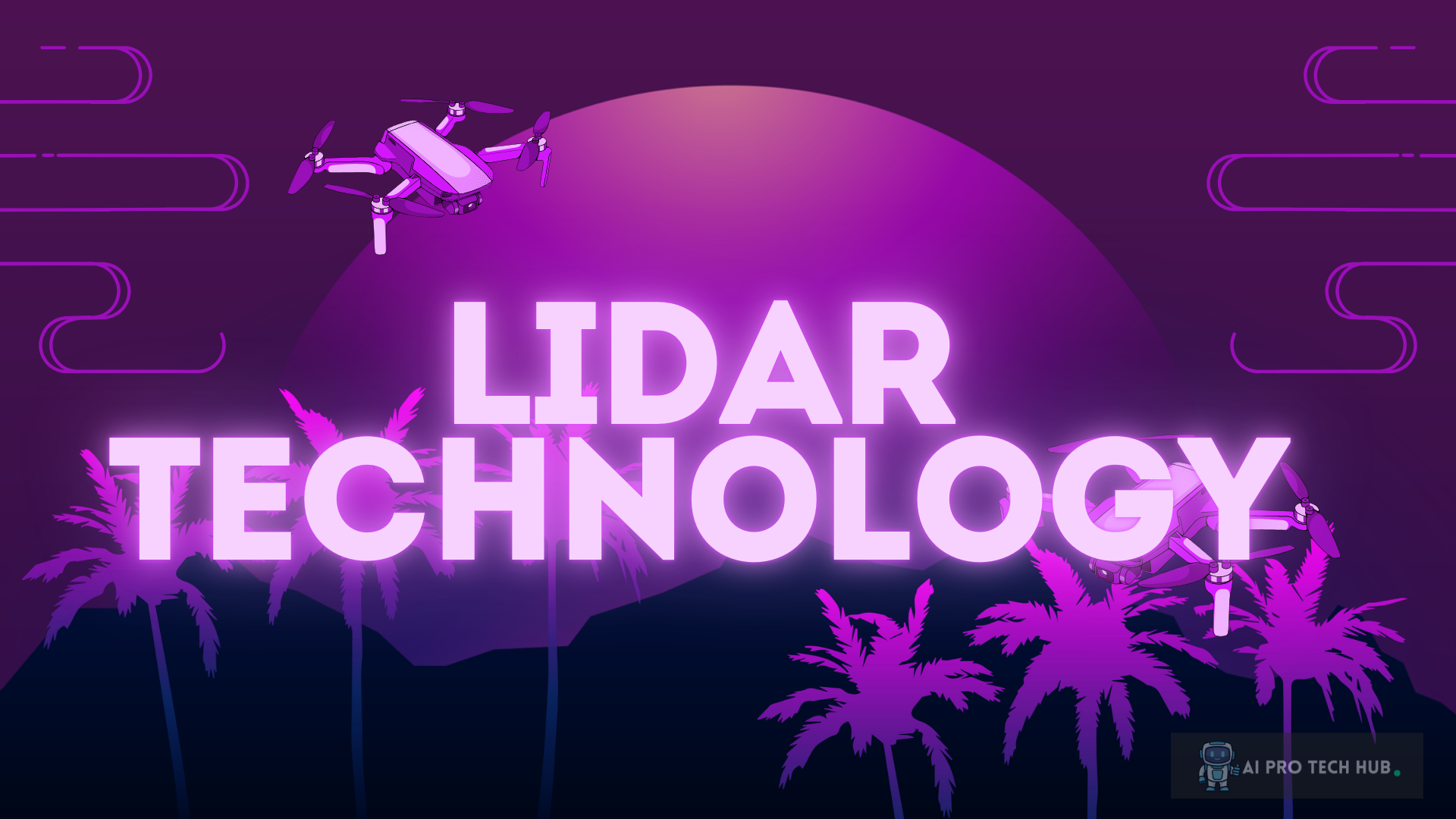In this developing world of technology, Light Detection and Ranging (LiDAR) has emerged as a transformative tool across various industries. LiDAR technology, which uses laser light to measure distances, offers unparalleled precision and efficiency in data collection, making it indispensable in fields ranging from environmental science to urban planning. This article delves into the principles of LiDAR, its diverse applications, and its impact on modern technology.

What is LiDAR?
LiDAR stands for Light Detection and Ranging. It is a remote sensing method that uses laser pulses to measure the distance between the sensor and a target object. The system emits laser beams that bounce back after hitting an object, and the time it takes for the light to return is used to calculate the distance. This process generates highly accurate three-dimensional data about the Earth’s surface and objects on it.
LiDAR systems typically consist of three main components, They are:
- Laser Source: Emits laser pulses at a specific wavelength.
- Receiver: Captures the reflected light and measures the time delay.
- GPS and Inertial Measurement Unit (IMU): Provides positional and orientation data to ensure accurate spatial referencing of the laser measurements.
What are the Principles of LiDAR Technology
The operation of a LiDAR system can be divided into several steps:
- Laser Pulse Emission: The LiDAR system sends out rapid pulses of laser light.
- Reflection and Return: These pulses hit objects and return to the sensor.
- Time Measurement: The system calculates the time taken for the laser to return.
- Distance Calculation: Based on the speed of light and the time measurement, the system calculates the distance to the object.
- Data Processing: The distance data is combined with GPS and IMU data to create a precise 3D model of the scanned area.
LiDAR systems can be airborne (mounted on aircraft or drones), terrestrial (mounted on vehicles or tripods), or even spaceborne (mounted on satellites), each suited for different applications and scales.
What are the Applications of LiDAR Technology

1. Environmental Monitoring and Conservation
LiDAR is crucial in environmental science for mapping and monitoring natural landscapes. It provides high-resolution data on vegetation, topography, and land cover. This data helps in assessing forest health, mapping habitats, and tracking changes in ecosystems over time. For example, LiDAR can be used to estimate tree canopy height and biomass, which are essential for understanding carbon sequestration and forest dynamics.
2. Urban Planning and Infrastructure
In urban planning, LiDAR data is used to create detailed 3D models of cities, enabling planners and architects to visualize and analyze urban environments. This technology helps in infrastructure development, including road design, flood modeling, and construction planning. For instance, LiDAR can generate accurate digital elevation models (DEMs) that are critical for designing drainage systems and managing flood risks.
3. Archaeology and Cultural Heritage
Archaeologists use LiDAR to uncover hidden structures and archaeological sites beneath dense vegetation. The technology can reveal features such as ancient roads, buildings, and earthworks that are otherwise difficult to detect. LiDAR has been instrumental in discovering lost cities and understanding historical landscapes, providing insights into ancient civilizations and their environments.
4. Forestry and Agriculture
LiDAR is increasingly used in forestry and agriculture for precision management. In forestry, it aids in mapping tree density, height, and biomass, which are vital for sustainable forest management. In agriculture, LiDAR data helps in monitoring crop health, optimizing irrigation, and managing soil properties. The technology enhances precision agriculture by providing detailed topographical data, leading to better yield predictions and resource management.
5. Transportation and Autonomous Vehicles
LiDAR technology is pivotal in the development of autonomous vehicles. It provides detailed 3D maps of roadways, obstacles, and surroundings, enabling self-driving cars to navigate safely and accurately. LiDAR systems on autonomous vehicles continuously scan the environment, detecting objects, pedestrians, and other vehicles in real-time, which is essential for collision avoidance and navigation.
What are the Challenges and Future of LiDAR Technology
While LiDAR technology offers numerous advantages, it also faces several challenges:
- Cost: LiDAR systems, especially high-resolution ones, can be expensive, limiting their accessibility.
- Data Processing: Handling and analyzing the large volumes of data generated by LiDAR systems requires advanced software and computational resources.
- Environmental Factors: LiDAR performance can be affected by weather conditions such as rain, fog, or dust, which may reduce accuracy.
Despite these challenges, ongoing advancements in LiDAR technology are addressing these issues. Innovations include the development of more affordable and compact LiDAR systems, improvements in data processing algorithms, and integration with other sensors and technologies.
Conclusion
LiDAR technology has revolutionized how we collect and analyze spatial data, offering unprecedented accuracy and detail. Its applications span across various fields, from environmental monitoring and urban planning to archaeology and autonomous vehicles. As technology continues to advance, LiDAR is likely to become even more integral to modern science and industry, driving innovation and improving our understanding of the world.
Which LiDAR Companies to Invest
Investing in LiDAR technology companies can be promising due to the growing demand for precise mapping and sensor technology across various industries. Key companies in this sector include:
Velodyne Lidar: Known for its pioneering LiDAR sensors used in autonomous vehicles and mapping applications.
Luminar Technologies: Focuses on high-performance LiDAR systems for automotive and industrial applications.
Quanergy Systems: Specializes in solid-state LiDAR sensors for smart cities and transportation.
Ouster: Provides high-resolution LiDAR sensors for automotive, robotics, and infrastructure projects.
Before investing, consider factors such as market position, technology advancements, and financial health of these companies.
Lidar Technology Stocks Names
Here are some notable publicly traded companies involved in LiDAR technology:
Velodyne Lidar, Inc. (VLDR) – A leading provider of LiDAR sensors used in autonomous vehicles and mapping.
Luminar Technologies, Inc. (LAZR) – Specializes in advanced LiDAR sensors for automotive and industrial applications.
Ouster, Inc. (OUST) – Produces high-resolution LiDAR sensors for various industries, including automotive and robotics.
Quanergy Systems, Inc. – Known for its solid-state LiDAR sensors, though it is currently not publicly traded. It was previously publicly traded under the ticker symbol QNGY before its acquisition.
These companies represent a cross-section of the LiDAR market, ranging from automotive applications to general-purpose sensing solutions. Always conduct thorough research or consult a financial advisor before making investment decisions.
Latest Posts:
-
What are the best AI tools for marketers to personalize their campaigns?
The Best AI Tools for Marketers to Personalize Their Campaigns In today’s competitive digital landscape, marketers must constantly innovate and … Read more
-
How can I use AI tools to improve my decision-making skills?
Using AI tools to improve decision-making skills is a transformative approach that’s gaining popularity across industries. AI technology offers tools … Read more
-
How AI Tools Are Changing the Workplace: Transforming the Future of Work
How AI tools are changing the workplace In recent years, artificial intelligence AI tools have become integral to the workplace, … Read more



